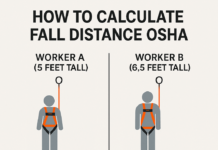
OSHA Stair Handrail Requirements
Introduction to OSHA Stair Handrail Requirements
Safety within workplaces is a paramount concern, and regulatory bodies like the Occupational Safety and Health Administration (OSHA) play a pivotal role in ensuring it. Among various safety aspects, stair handrails are a crucial element that demands attention to adhere to specific standards and guidelines set forth by OSHA.
Key Requirements for Stair Handrails
OSHA delineates precise requirements for stair handrails, encompassing aspects like height, clearance, materials used, and structural specifications. These standards aim to ensure the safety and stability of handrails, preventing accidents and injuries.
Occupational Safety and Health Administration (OSHA) in the United States has specific requirements for stair handrails in workplaces to ensure safety. Here are some general guidelines:- Height: Handrails should be between 30 and 37 inches above the stair tread surface.
- Strength: Handrails must be able to withstand a certain amount of force to ensure they provide adequate support. Typically, they need to sustain at least 200 pounds of downward or outward force.
- Extension: Handrails should extend horizontally at least 12 inches beyond the top and bottom of the stairs.
- Consistency: Handrails should be continuous along the entire length of the stairs, with no interruptions except for breaks at doorways.
- Grip: Handrails should have a shape that allows for a firm grip, usually with a circular cross-section with a diameter of 1.25 to 2 inches or a shape that provides an equivalent gripping surface.
- Mounting: Handrails should be securely mounted to the wall or structure, capable of supporting the specified loads without becoming loose or detached.
These requirements aim to ensure that stair handrails provide proper support and safety for individuals using the stairs in workplaces, reducing the risk of accidents and injuries. However, it's essential to check the specific OSHA guidelines and regulations applicable to your location and industry, as they might have additional or modified requirements.Types of Stair Handrails
Stair handrails come in various designs and materials, each with its advantages and drawbacks. Understanding these differences aids in choosing the most suitable option that complies with OSHA regulations while meeting functional and aesthetic needs.
Installation Guidelines
Installing stair handrails involves more than mere fixation. Proper positioning, alignment, and adherence to OSHA’s installation guidelines are crucial for ensuring their effectiveness and compliance.
Maintenance and Inspection
Regular maintenance and inspections are imperative to uphold OSHA compliance. This section highlights the significance of periodic checks and provides insights into maintaining adherence to regulations.
OSHA Compliance and Penalties
Non-compliance with OSHA’s stair handrail requirements can lead to severe penalties. Understanding the consequences and taking proactive measures to comply is crucial for businesses and individuals.
Case Studies and Examples
Real-life cases serve as valuable lessons in understanding the implications of compliance or non-compliance with OSHA regulations. Analyzing these instances provides practical insights for stakeholders.
Future Trends in Stair Handrail Requirements
As safety standards evolve, so do stair handrail requirements. Anticipating future changes and advancements in this domain is crucial for staying ahead and ensuring continued compliance.
Conclusion
The significance of adhering to OSHA’s stair handrail requirements cannot be overstated. It’s not just about compliance; it’s about ensuring the safety and well-being of everyone within a workplace.
OSHA Vertical Lifeline Requirements
OSHA Fall Protection Requirements
OSHA Anchor Point Requirements
FAQs
- Are OSHA stair handrail requirements applicable to all industries? OSHA regulations on stair handrails apply broadly across various industries. Any workplace with stairs must comply with these standards to ensure the safety of employees and visitors.
- What are the consequences of failing to comply with OSHA standards? Non-compliance with OSHA regulations, including those related to stair handrails, can result in penalties, fines, and potential legal actions. Additionally, it can compromise the safety of individuals within the workplace.
- Can existing stair handrails be modified to meet OSHA requirements? Yes, existing stair handrails can often be modified or upgraded to comply with OSHA regulations. However, it’s crucial to ensure that any modifications adhere to the specific guidelines set forth by OSHA.
- Are there any exceptions to OSHA’s stair handrail guidelines? OSHA does provide some exceptions or allowances in certain situations, such as in historic buildings where strict adherence might compromise the building’s integrity. However, these exceptions are usually specific and should be carefully evaluated.
- How often should stair handrails be inspected for compliance? Regular inspections are vital to maintaining compliance. Typically, stair handrails should be inspected periodically as part of routine workplace safety checks. The frequency might vary based on usage, but an annual inspection is a common recommendation.
























